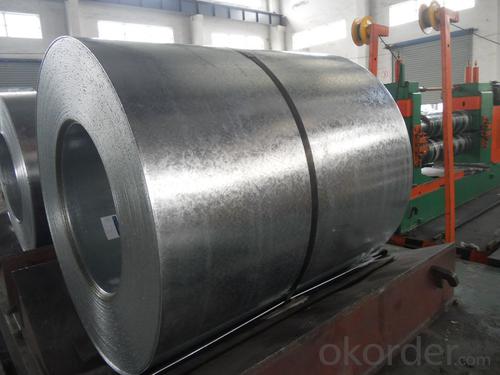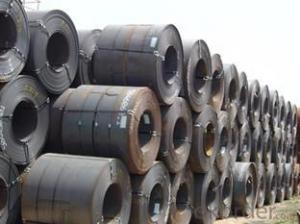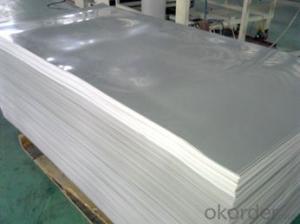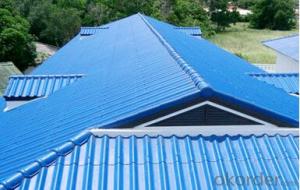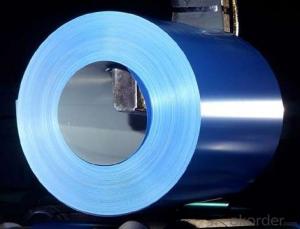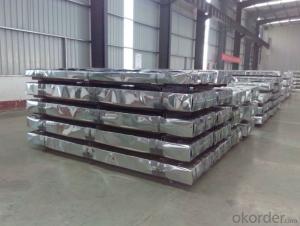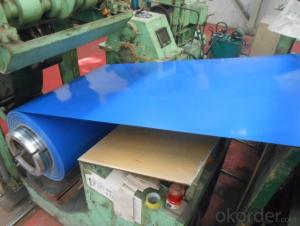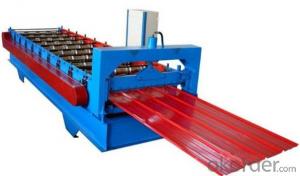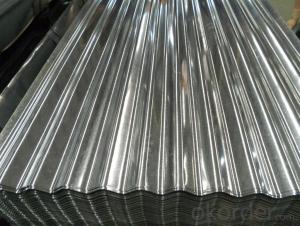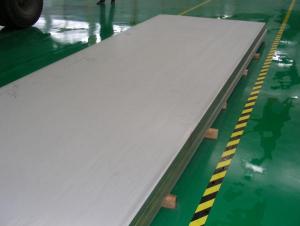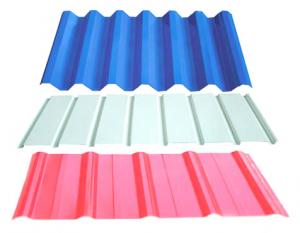Hot Dipped Galvanized Steel Sheet
- Loading Port:
- China Main Port
- Payment Terms:
- TT OR LC
- Min Order Qty:
- -
- Supply Capability:
- -
OKorder Service Pledge
Quality Product, Order Online Tracking, Timely Delivery
OKorder Financial Service
Credit Rating, Credit Services, Credit Purchasing
You Might Also Like
HOT DIPPED GALVANIZED STEEL SHEETS
STEEL GRADE & STANDARD: JIS G3302 SGHC
ZINC COATING MASS: Z27
SPANGLE: REGULAR SPANGLE
SURFACE TREATMENT: CHROMATED, UNOILED, NONSKINPASSED
BUNDLE WEIGHT: 3MTS MAX
SIZE (MM) MOQ (MTS)
2.8*1250*2500 50
3.8*1250*2500 50
- Q: What is the process of hot-dipping steel sheets?
- Hot-dipping steel sheets is a process in which steel sheets are immersed in a bath of molten zinc to create a protective coating. The sheets are first cleaned and then passed through a series of chemical treatments to remove any impurities. They are then dipped into the zinc bath, where a metallurgical bond is formed between the steel and zinc, resulting in a durable and corrosion-resistant coating.
- Q: What's the difference between profiled steel sheet and color steel plate?
- A kind of color steel plate is in fact, but now the normal pressure plate to floor plate thickness in 0.7-1.5MM is used in galvanized coil is the main steel structure building, airport, train station, subway station, shopping malls, etc. some of the large span steel structure.
- Q: What is the bending radius for steel sheets?
- The bending radius of steel sheets is influenced by several factors, including the sheet's thickness, the type of steel utilized, and the particular application at hand. Typically, a widely accepted guideline suggests employing a bending radius that is no less than twice the thickness of the steel sheet. Nevertheless, this figure can fluctuate depending on the specific demands and constraints of the undertaking. It is crucial to seek guidance from engineering and fabrication specialists experienced in handling steel sheets to ascertain the suitable bending radius for a specific application.
- Q: Can steel sheets be used in construction?
- Certainly, construction can definitely make use of steel sheets. Due to their strength, durability, and versatility, steel sheets are commonly employed in construction ventures. They find application in diverse areas such as roofing, walls, flooring, and structural components. Steel sheets possess a remarkable tensile strength, rendering them capable of enduring heavy loads and extreme weather conditions. Moreover, steel sheets exhibit fire-resistance, termite-resistance, and a long lifespan, making them a dependable option for construction projects. Additionally, steel sheets offer ease of fabrication, enabling customization and flexibility in design. In summary, steel sheets serve as an outstanding option for construction, ensuring structural integrity, durability, and design adaptability.
- Q: What is the typical impact strength of a steel sheet?
- The typical impact strength of a steel sheet can vary depending on various factors such as the grade and thickness of the steel, as well as the specific testing method used to measure impact strength. However, steel sheets generally exhibit high impact strength, making them resistant to cracking or breaking under sudden or dynamic loads.
- Q: What is the process of laminating steel sheets?
- The process of laminating steel sheets involves bonding multiple layers of steel together to create a stronger and more durable material. This is typically done by applying heat and pressure to the sheets, which causes them to fuse together. The sheets are often coated with a layer of adhesive or resin before lamination to enhance the bonding process. The result is a laminated steel sheet that exhibits improved strength, resistance to corrosion, and other desirable properties.
- Q: Do steel sheets have any environmental benefits?
- Yes, steel sheets have several environmental benefits. Firstly, steel is highly recyclable, meaning that it can be reused multiple times without losing its strength or quality. This reduces the need for virgin raw materials and reduces the amount of waste being sent to landfills. Additionally, steel production has become more energy-efficient, resulting in lower greenhouse gas emissions compared to other materials. Steel sheets are also highly durable and resistant to corrosion, which means they have a longer lifespan and require less maintenance, reducing the overall environmental impact.
- Q: How can steel plates with a thickness of 1MM be welded?
- Because there is a certain spacing between the welds, the welding is only used for the welding of the thin plate, the lap structure, the metal mesh and the cross bar structure
- Q: What is the process of embossing on steel sheets?
- The process of embossing on steel sheets involves creating raised or recessed designs on the surface of the steel. This technique is commonly used to add texture, improve aesthetics, or enhance the mechanical properties of the steel. The first step in the embossing process is preparing the steel sheets. This typically involves cleaning the surface to remove any dirt, oils, or coatings that may interfere with the embossing process. The steel sheets are then carefully inspected for any imperfections or surface defects that could affect the embossing quality. Once the steel sheets are prepared, they are placed in an embossing machine, which consists of two or more rollers. These rollers have engraved patterns on their surfaces, which will be transferred onto the steel sheets. The rollers are typically made of hardened steel or other materials that are resistant to wear and tear. As the steel sheets pass through the embossing machine, pressure is applied to the rollers, causing them to press against the steel surface. This pressure creates a plastic deformation in the sheet, resulting in the desired raised or recessed pattern. The depth and intensity of the embossing can be adjusted by controlling the pressure applied by the rollers. In some cases, heat may be applied during the embossing process to soften the steel sheets and make them more malleable. This allows for deeper and more intricate embossing patterns to be achieved. The temperature and duration of the heating process will depend on the specific type of steel being used and the desired outcome. After the embossing process is complete, the steel sheets may undergo additional treatments such as cleaning, coating, or polishing to further enhance their appearance and protect them from corrosion. These finishing steps help to ensure that the embossed steel sheets meet the desired quality standards and are ready for their intended application. Overall, the process of embossing on steel sheets is a versatile and effective way to add texture and visual interest to the surface of the steel. It requires careful preparation, precision machinery, and skilled operators to achieve consistent and high-quality results.
- Q: Can the steel sheets be easily formed into decorative panels?
- Indeed, decorative panels can be effortlessly crafted from steel sheets. Steel, being a flexible material, can be molded and shaped into diverse forms, including decorative panels. By utilizing appropriate tools and methodologies, steel sheets can be skillfully cut, bent, and manipulated to produce intricate and distinctive designs. Furthermore, steel possesses exceptional durability and longevity, rendering it a perfect choice for decorative panels that necessitate both visual allure and structural soundness. Whether it is for architectural objectives, interior design endeavors, or artistic installations, steel sheets can be readily transformed into visually captivating and functionally efficient decorative panels.
Send your message to us
Hot Dipped Galvanized Steel Sheet
- Loading Port:
- China Main Port
- Payment Terms:
- TT OR LC
- Min Order Qty:
- -
- Supply Capability:
- -
OKorder Service Pledge
Quality Product, Order Online Tracking, Timely Delivery
OKorder Financial Service
Credit Rating, Credit Services, Credit Purchasing
Similar products
Hot products
Hot Searches
Related keywords



